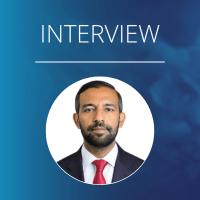 https://treasuryxl.com/wp-content/uploads/2025/04/Treasury-Spring-van-Template-2.png
200
200
treasuryXL
https://treasuryxl.com/wp-content/uploads/2018/07/treasuryXL-logo-300x56.png
treasuryXL2025-07-03 08:49:572025-07-03 08:51:48Heating up? Political tension holds, whilst market calm returns.
https://treasuryxl.com/wp-content/uploads/2025/04/Treasury-Spring-van-Template-2.png
200
200
treasuryXL
https://treasuryxl.com/wp-content/uploads/2018/07/treasuryXL-logo-300x56.png
treasuryXL2025-07-03 08:49:572025-07-03 08:51:48Heating up? Political tension holds, whilst market calm returns.Treasury refers to the financial department or division within a government or organization responsible for managing and controlling financial resources, including funds, assets, and investments. Treasury plays a critical role in budgeting, cash management, and ensuring the financial stability and liquidity of the entity it serves.
To understand the concept of treasury, consider it as the financial equivalent of managing your personal cash flow, but on a larger scale, involving organizations such as corporations, governments, and nonprofits, with dedicated teams of professionals handling numerous daily transactions.
Examples of Treasury Tasks
In the realm of Treasury tasks, three distinct areas come into focus, each with its own set of responsibilities:
- Cash Management
Operations: This aspect involves efficiently handling cash flows, managing receipts and disbursements, calculating and monitoring the company’s cash position, developing cash account structures, and generating cash management reports.Optimization: It emphasizes the evaluation of payment methods, cash flow forecasting, foreign exchange analysis, and the management of merchant services programs while optimizing short-term liquidity.
- Risk Management
Financial Research: This component focuses on researching and evaluating various risks, including foreign exchange, interest rates, commodity price fluctuations, creditworthiness of customers, and liquidity, with the aim of developing strategies to mitigate them.Operational Controls: Here, the focus is on evaluating treasury management systems, functions, and strategies, developing and testing business continuity plans, implementing measures to prevent operational risks, maintaining documentation, and ensuring compliance with internal controls and regulatory requirements.
- Corporate Finance
Strategic Analysis: Corporate Finance concentrates on evaluating market conditions, long-term borrowing and investment strategies, and aligning these strategies with the company’s long-range forecast and objectives. It involves analyzing factors like credit availability, interest rates, and risk to make informed decisions.Executive Management: This aspect revolves around implementing long-term investment and borrowing strategies, aligning treasury activities with the company’s overall financial strategy, managing the capital budgeting process, optimizing funding sources, and maintaining strong relationships with shareholders and lenders.
These areas collectively form the core tasks of treasury professionals, each contributing to the financial stability and success of the organization.
What is a Treasurer?
A treasurer is a financial professional responsible for managing and controlling an organization’s financial resources, including funds, assets, and investments. They oversee cash flow, ensuring there is enough liquidity to meet operational needs while optimizing fund usage to generate returns or reduce borrowing costs. Treasurers also assess and manage financial risks, make strategic decisions about capital structure and financing options, and aim to maximize shareholder value and long-term financial well-being.
What is the Role of a Treasurer?
The role of a treasurer involves three primary disciplines:
- Cash Management: First, treasurers oversee an organization’s cash flow, ensuring that there’s enough liquidity to meet operational needs while optimizing the use of available funds to generate returns or minimize borrowing costs.
- Risk Management: Secondly, treasurers assess and manage financial risks such as currency fluctuations, interest rate changes, and credit risks to protect the organization from potential losses, often through hedging strategies and insurance.
- Corporate Finance: Lastly, in the realm of corporate finance, treasurers make strategic decisions about capital structure, financing options, and investment choices, aiming to maximize shareholder value and ensure the long-term financial health of the organization.
Frequently Asked Questions about Treasury
In this set of frequently asked questions about Treasury, we’ll explore the distinctions between Treasury and Accounting, Treasury and Corporate Finance, how to become a Treasurer, and the salary expectations for a Corporate Treasurer.
-
Treasury vs Accounting: What is the Difference?
Distinguishing Treasury from Accounting involves recognizing their unique roles: Treasury focuses on optimizing cash flows aligned with business goals, while Accounting is responsible for crafting precise financial statements to portray the company’s financial well-being accurately.
To grasp this distinction fully, it’s essential to differentiate between cash flows and income-expense dynamics. In Accounting, revenue is recorded upon a sale, even if it takes time to materialize as cash. Conversely, Treasury concerns itself with actual cash movements, rendering booked revenue temporarily irrelevant until it manifests as tangible cash. Similarly, expenses are booked in Accounting but remain as cash until disbursed, a perspective crucial in Treasury’s cash management.
-
Treasury vs Corporate Finance: How are they different?
The key distinction between Treasury and Finance lies in Corporate Finance encompassing borrowing and investment strategies for corporate funding and strategic goals, while Treasury focuses on the tactical execution and management of cash, risk, and liquidity within the broader framework of Corporate Finance. From a financial accounting viewpoint, Corporate Finance delves into not only cash flows but also the overall financial well-being of the company. In the realm of Treasury, Corporate Finance forms the bedrock of long-term strategy, shaping the boundaries and objectives for Cash and Risk Management.
It’s essential to acknowledge that in the banking sector, the term “corporate finance” carries a distinct interpretation. In banking discussions, it typically signifies a specific line of business dedicated to fundraising for corporations or providing advisory services on their behalf. In this banking context, Corporate Finance mainly revolves around facilitating transactions between corporations and potential investors.
-
Who is in charge of Treasury within a company?
In small organisations, Treasury work is mostly done by the Chief Financial Officer or finance department. Larger organisations often have their own treasury departments, which are headed by a treasurer who reports to the CFO. Ultimately, Treasury is controlled by the CFO.
-
How has the role of the Treasurer changed over time?
Although the basic role of the treasurer remains the same over time, the content of Treasury activity evolves over time. Due to external factors, such as technology, regulations, and new financial products, some tasks are less time-consuming nowadays than they were in the past.
Traditionally, the job of the treasurer was filled primarily with tasks like bank selection, reconciling bank statements, and managing daily transactions.
These days, many of these tasks can be automated. A treasury management system (TMS) can handle much of this work for the treasurer. Instead, the modern treasurer works increasingly closely with colleagues in the finance and risk departments. The risk of cyber fraud, for example, is now an ever-present concern. In the past, a treasurer only went to the company’s bank for financing. These days, there are many other options for financing, or for reducing financial risk.
Increasingly complex banking and governmental regulations also take up more and more of the treasurer’s time.
It is the task of the treasurer to keep up to date with developments, and to be the consultant for the organisation on all treasury-related subjects.
Our observation is that in the last decade, many treasurers have been able to leave their ivory towers and bring extra value to their business colleagues. They do so, for example, through more diverse funding solutions, offering sales in various currencies and increased liquidity visibility.
-
What is the Salary of a Corporate Treasurer?
The salary of a Corporate Treasurer can vary widely based on factors such as the company’s size, location, industry, and the individual’s experience and qualifications. On average, Corporate Treasurers can earn a competitive salary ranging from €60,000 to €250,000 or more annually, with the potential for additional bonuses and benefits depending on their performance and the company’s financial performance.
-
How do I become a Treasurer?
Becoming a Treasurer typically involves a combination of education, experience, and specific skill development. Many Treasurers hold a bachelor’s degree in finance, accounting, or a related field, but some may also have backgrounds in economics or business administration. Gaining relevant experience in finance, such as through internships or entry-level finance roles, can be invaluable.
To enhance your qualifications, consider pursuing professional certifications like Certified Treasury Professional (CTP) or Chartered Financial Analyst (CFA), which can demonstrate your expertise and commitment to the field. Networking within the finance and treasury community can also open up opportunities for mentorship and job referrals.
Additionally, keeping up-to-date with industry trends and best practices is crucial, and you can find valuable education and training resources on treasuryXL to help you navigate your journey toward becoming a Treasurer. Furthermore, be sure to study the treasuryXL eBook in which we bundled the most important information for you and designed easy-to-read and understand articles about the main subjects within the World of Treasury.
Treasury summarized
Treasury serves to protect a company’s assets, manage liquidity, and reduce financial and operational risks. Comprising three sub-disciplines, it aligns with Corporate Finance’s long-term strategy. Cash Management prioritizes operational efficiency, while Risk Management focuses on financial research and operational controls.













































































